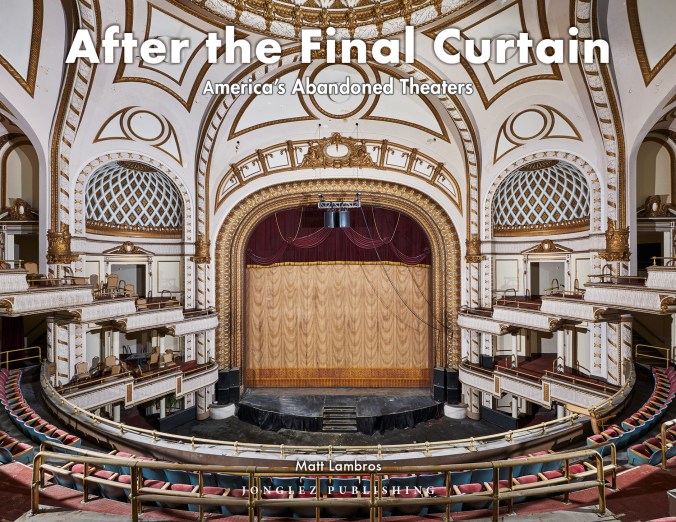This post was originally posted on After the Final Curtain’s Patreon in Jan 2021. You can become a patron at: https://www.patreon.com/afterthefinalcurtain
Want to see the Emery for yourself? It’s one of the new photography workshop locations for 2023. Find out more at: https://www.mlambrosphotography.com/workshops
Built as part of the Ohio Mechanics Institute, the Emery Theatre in Cincinnati, Ohio opened on January 6, 1912 as the Emery Auditorium. It was funded by an endowment of $656,737 ($17.1 million with inflation) from Mary Emery, whose husband, Thomas J. Emery had planned on building a similar school in the city. Emery stipulated as part of the endowment that the auditorium must be open to the public and have at least 1,800 seats. The 2,200-seat theater was designed by Harvey Hannaford of the architectural firm of Samuel Hannaford & Sons. It was one of four “acoustically perfect” concert halls whose design was inspired by the Auditorium Theatre in Chicago, IL. The other three were the Orchestra Hall, also in Chicago, Carnegie Hall in New York, and the Orchestra Hall in Detroit, MI.
The Cincinnati Symphony Orchestra held an inaugural concert at the theater on January 6, 1912. In 1924, George Gershwin performed his classic composition Rhapsody in Blue at the theater. On April 25, 1936, the Cincinnati Symphony Orchestra held its final concert at the Emery; it moved to the Cincinnati Music Hall, a space with more seats and more parking. Beginning in 1935 and ending in 1939, the Federal Theatre Project, a program established during the Great Depression as part of the New Deal to fund live entertainment programs, began to use the Emery. From 1938 to 1948, the theater was the home of The Boone County Jamboree, an American Country Radio Program. A 500,000-watt transmitter was used by station WLW so that millions of people around the country could listen to the program.
The Reverend Martin Luther King Jr. spoke at the Emery on June 16, 1959 while he was campaigning for Ted Berry during Berry’s run for Cincinnati City Council. The University of Cincinnati (UC) took ownership of the Emery building in 1969, when the Ohio Mechanics Institute was incorporated into the university. A Wurlitzer Opus 1680 organ moved to the Emery from the nearby Keith’s Theater the same year, but was not completely installed until 1977. That same year, the Ohio Valley Chapter of the American Theater Organ Society began programming shows on the weekends. They held organ concerts, showed silent, talking, and 3D films, and reduced the seating by closing the upper balcony. The final organ concert was held on October 24, 1999, after which the Wurlitzer was removed to be restored. It would never return to the Emery, and was installed in the Cincinnati Music Hall’s ballroom in 2004.
Beginning in November 2011, the Requiem Project, a non-profit group formed in late 2008 to restore the theater, held concerts, film festivals and recording sessions at the Emery. The National, Dirty Projectors, Carrie Rodriguez, Ralph Stanley and others performed at the theater during this time. The Requiem Project hired John Senhauser Architects and Westlake Reed Leskosky, two architecture firms, to create the restoration plans for the Emery. However, the Emery Center Corporation, who subleased the theater from Emery Center
Apartments Limited Partnership (ECALP), who in turn leased it from UC, shut down all programming in 2013. According to Kathy Schwab, head of the Emery Center Corp in 2013, programming was stopped due to the theater’s dilapidated state and because everything had to be approved by UC. The Requiem Project sued to try to continue their renovation efforts at the theater, but eventually settled in March 2016. On April 23, 2019, the UC board of trustees voted to sell the Emery; according to them, it is beyond repair. It was sold for $8.55 million to local developers who intend to restore the building. The restoration costs are estimated at around $30 million and will take about three years to complete.










